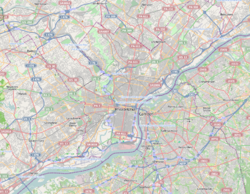College of Physicians of Philadelphia
|
The College of Physicians of Philadelphia Building
|
|

22nd Street facade
|
|
| Location | 19 South 22nd Street, Philadelphia, Pennsylvania |
|---|---|
| Coordinates | 39°57′12″N 75°10′36″W / 39.95333°N 75.17667°WCoordinates: 39°57′12″N 75°10′36″W / 39.95333°N 75.17667°W |
| Area | <1 acre |
| Built | 1909 |
| NRHP Reference # | 08001088 |
| Significant dates | |
| Added to NRHP | October 6, 2008 |
| Designated NHL | October 6, 2008 |
The College of Physicians of Philadelphia is the oldest private medical society in the United States. Founded in 1787 by 24 Philadelphia physicians "to advance the Science of Medicine, and thereby lessen human misery, by investigating the diseases and remedies which are peculiar to our country" and to promote "order and uniformity in the practice of Physick," it has made important contributions to medical education and research. The College hosts the Mütter Museum, a gallery of 19th-century specimens, teaching models, instruments, and photographs, as well as the Historical Medical Library, which is one of the country's oldest medical libraries.
The College of Physicians of Philadelphia Building, designed by the firm of Cope & Stewardson and built in 1909, was designated a U.S. National Historic Landmark in October, 2008. It was also then listed on the National Register of Historic Places.
The College remains a private membership organization of physicians, whose members or "fellows" attend regular meetings on professional education and development. Starting in 1995 the C. Everett Koop Community Health Information Center has provided current information about medical and health topics to the general public. The Francis Clark Wood Institute for the History of Medicine, founded in 1976, supports seminars and conferences in the history of medicine and the Mütter Museum and the College Library specialize in the history of medicine rather than general medical topics. The Library and Museum are open to the public.
Founded by Thomas Dent Mütter in 1858 for medical research, the museum's contents include medical oddities, anatomical and pathological specimens, and antique medical equipment. Anatomical specimens include the conjoined liver of Siamese twins Chang and Eng Bunker; and a section of the brain of Charles J. Guiteau, who assassinated President Garfield. Medical instruments include a wooden stethoscope and Marie Curie's quartz-piezo electrometer
...
Wikipedia



